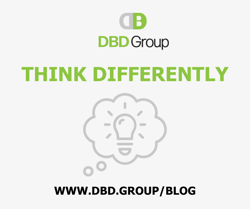In theory, we all know the importance of data when it comes to working efficiently and effectively. We’ve heard phrases like “data driven” and understand that to be good stewards of our work we should be using data as a regular part of our work.
Yet many nonprofits struggle to truly integrate data into their culture and in their decision-making processes. Here are some ideas on how you can more effectively integrate data into your organization:
1. Create consensus
Be honest – do you truly believe data is vital to helping you do your best work? If not, then that’s where to start. Whether it’s convincing one or two members of the team or implementing an organization-wide process, start with building a general consensus of the importance and role of data.
2. Create sustainable, buildable processes
Once you’ve agreed that data is vital, you have to figure out how to make it readily available and highly visible. It’s best to go slowly; if you try to integrate too much data too quickly, you’ll end up creating more work for yourself as it will be too overwhelming for most people. Focus on foundational needs first and then build over time as comfort and confidence increases.
3. Create expectations and accountability
People need to clearly understand what their role and use of data should be AND they should also know that if that expectation is not met, what will follow. It’s too easy to fall back on old habits and avoid using data if there isn’t a system of accountability in place to remind folks why it’s so vital. And if there’s not clarity of expectations then it’s not fair or realistic to try to enforce accountability.
4. Model, reiterate and remind
Change is hard. The excitement you at the beginning can wane with time. Don’t be afraid to reiterate and overcommunicate: remind the team of the consensus you built, of why integrating data is so important, the value and benefit it can have for them specifically. Encourage healthy and respectful team accountability and model it consistently starting at the top. Nothing is worse than when a leader says one thing and does another.
5. Celebrate wins
You made the commitment to incorporate data because you knew that it would benefit your organization. Once you start the process, make it a priority to not only document, but to share when you see this in action in your organization. If a certain report revealed a weakness that led to a change in behavior that then led to exceeding a goal, celebrate! Let it be a concrete example to refer back to as the team continues integrating data into their work.
What has been your experience trying to become a more data-driven team or organization? Share in the comments below!
THIS MONTH'S FOCUS
Things are changing in the world of nonprofit leadership and nonprofit fundraising. New generations, new technology, new ways of communicating... these trends are challenging all of us to think differently. This month, join us as we explore the opportunities we have to try new things, explore new ways of engaging, and meet the challenges of the future.


